Mondraker’s full suspension cross county F-Podium is a 115mm travel carbon frame paired with a 120mm fork. Keep reading to learn more about the proven XC winner and compare Mondraker F-Podium Builds.
The F-Podium comes in four sizes to accommodate riders from around 5’4″ to 6’6″. Scroll down for more info on the F-Podium’s sizing and geo but don’t be shy with questions. Getting the fit right on a cross country adventure or XC race bike is critical! We’re here to help.
Four kits are available in the F-Podium. Starting with the F-Podium at $4,999, then the F-Podium R at $6,499 to the F-Podium RR for $7,999 and the no compromise F-Podium RR SL at $11,499.
Keep reading for more details on the cross country MTB Mondraker F-Podium.
The Mondraker F-Podium is offered in 4 builds and a Frame option.
The F-Podium RR SL is Midnight Blue with white, red and light blue accents.
F-Podium RR is Polaris purple with black and silver highlights.
Mondraker’s F-Podium R is Flame Red with grey and black accents.
The F-Podium is Carrera Blue with a body of raw carbon and white highlights.
Shop Mondraker F-Podium Completes at BikeCo.com
Ready to order your Mondraker F-Podium? The tabs below show in-stock and available F-Podium Completes. Looking for a little more from your build? Contact our team about available upgrades and part swaps to the factory Mondraker F-Podium bikes.
If you don’t see the size and color you’re interested in contact our team for availability timeline at 949-470-1099.
Find the perfect F-Podium bike in-stock here at BikeCo.com or available at Mondraker (approximately 10-14 days for delivery).
In-Stock & Available: Mondraker F-Podium RR SL Bikes
Don’t see your size or spec below? Contact our team for the lead time! 949-470-1099
-

Mondraker F-Podium RR SL Small
$11,499.00Available at Mondraker 3rd Week of of Apr. - Updated 04/19/24
Read more -

Mondraker F-Podium RR SL Medium
$11,499.00Available at Mondraker 3rd Week of of Apr. - Updated 04/19/24
Read more -

Mondraker F-Podium RR SL Large
$11,499.00Contact Us About Availability. - Updated 04/19/24
Read more -

Mondraker F-Podium RR SL XLarge
$11,499.00Limited Stock at Mondraker in Spain. 2-3 Weeks for Delivery. - Updated 04/19/24
Read more
In-Stock & Available: Mondraker F-Podium RR Bikes
Don’t see your size or spec below? Contact our team for the lead time! 949-470-1099
-

Mondraker F-Podium RR Small
$7,999.00Available at Mondraker 3rd Week of of Apr. - Updated 04/19/24
Read more -

Mondraker F-Podium RR Medium
$7,999.00Limited Stock at Mondraker in Spain. 2-3 Weeks for Delivery. - Updated 04/19/24
Read more -

Mondraker F-Podium RR Large
$7,999.00Available at Mondraker 3rd Week of of Apr. - Updated 04/19/24
Read more -

Mondraker F-Podium RR XLarge
$7,999.00Available at Mondraker 3rd Week of of Apr. - Updated 04/19/24
Read more
In-Stock & Available: Mondraker F-Podium R Bikes
Don’t see your size or spec below? Contact our team for the lead time! 949-470-1099
-

Mondraker F-Podium R Small
$6,499.00Available at Mondraker 4th Week of of Jun. - Updated 04/19/24
Read more -

Mondraker F-Podium R Medium
$6,499.00Limited Stock at Mondraker in Spain. 2-3 Weeks for Delivery. - Updated 04/19/24
Read more -

Mondraker F-Podium R Large
$6,499.00Available at Mondraker 2nd Week of of Apr. - Updated 04/19/24
Read more -

Mondraker F-Podium R XLarge
$6,499.00Limited Stock at Mondraker in Spain. 2-3 Weeks for Delivery. - Updated 04/19/24
Read more
In-Stock & Available: Mondraker F-Podium Bikes
Don’t see your size or spec below? Contact our team for the lead time! 949-470-1099
-
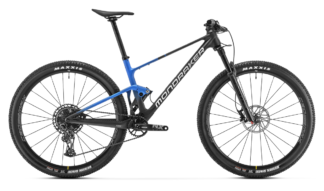
Mondraker F-Podium Small
$4,999.00Limited Stock at Mondraker in Spain. 2-3 Weeks for Delivery. - Updated 04/19/24
Read more -

Mondraker F-Podium Medium
$4,999.00Available at Mondraker in Spain. 2-3 Weeks for Delivery. - Updated 04/19/24
Read more -

Mondraker F-Podium Large
$4,999.00Limited Stock at Mondraker in Spain. 2-3 Weeks for Delivery. - Updated 04/19/24
Read more -

Mondraker F-Podium XLarge
$4,999.00Available at Mondraker in Spain. 2-3 Weeks for Delivery. - Updated 04/19/24
Read more
In-Stock & Available: Mondraker F-Podium RR SL Frames
Don’t see your size or spec below? Contact our team for the lead time! 949-470-1099
-

Mondraker F-Podium RR SL Frame Small
$3,999.00Limited Stock at Mondraker in Spain. 2-3 Weeks for Delivery. - Updated 04/19/24
Read more -

Mondraker F-Podium RR SL Frame Medium
$3,999.00Contact Us About Availability. - Updated 04/19/24
Read more -

Mondraker F-Podium RR SL Frame Large
$3,999.00Contact Us About Availability. - Updated 04/19/24
Read more -

Mondraker F-Podium RR SL Frame XLarge
$3,999.00Available at Mondraker 2nd Week of of May. - Updated 04/19/24
Read more
Below we’ll highlight compare the alloy Mondraker F-Podium kit specs as well as look at common part swaps and upgrades.
Part swaps and upgrades on the Mondraker kits are common especially in Cockpit, Brakes, Suspension Tuning and Wheels. Getting the perfect spec on your new bike will help you get the most out if it in a wide range of terrain.
Questions on spec? No worries that’s what were here for. Wondering what you might ask? Which brakes are best for your riding style and preference? What cockpit size and setup should you run? Are there areas that you might spend a little bit extra but gain a lot of performance? All valid questions on purchases at this level. Let’s go over your questions today!
Compare Mondraker F-Podium Build Kits
The F-Podium lineup is available in a variety of builds with a wide range of price points. With so much personal preference in a true cross country bike build it’s likely you’ll find a good starting point in one of the Mondraker builds but swaps and changes are very, very common.
Shared Highlights of all F-Podium Kits:
Really the only common spec on the F-Podium factory builds is found in the tires! Everything is is variable, although all four builds feature SRAM drivetrains.
Tires
Front and rear the F-Podium is spec’d with Maxxis Rekon Race 29×2.4 EXO tires. This provides a nice balance of speed, grip and small bump compliance. The Rekon Race is a fast pattern and with a relatively “full” profile of a 2.4″ tires riders don’t have to give up too much mechanical grip while giving a bit of an improved small bump feel from the tire volume.
Cross Country riders tend to have a personal go to. On this bike maybe you’re looking for a bit more grip in the front and look at the Rekon. Or a even and Ardent. Some riders might go for lower volume tire options as well like a Rekon or Ikon rear.
Know what you love? Let’s dial you in. Wondering what tire combo is right for you? Chat with our team and we’ll help you define which tire will pair with your riding personality.
What are some other thoughts? Maybe you want to add rim protection? No matter what your preference our team is here to get you dialed in.
These tabs review the spec differences between the Mondraker F-Podium factory build kits! Read more about common part swaps and upgrades to the Mondraker builds.
| Build Kit | – | R | RR | RR SL |
|---|---|---|---|---|
| MSRP | $4,999 | $6,499 | $7,999 | $11,499 |
| Fork | RockShox SID Base 3P Remote, 120mm | FOX 34 Performance StepCast GRIP, 120mm | FOX 34 Factory StepCast FIT4, 120mm 3 position Remote |
RockShox SID Ultimate 3p Remote, 120mm |
| Shock | RockShox SID Lux 3p Remote, 165x45mm | FOX Performance Float SL, 165x45mm | FOX Factory Float SL, 165x45mm 3 position Remote |
RockShox SID Lux Ultimate 3p Remote, 165x45mm |
| Wheelset | Mavic CrossMax, 30mm Internal | Mavic CrossMax XL R, 30mm Internal | Mavic CrossMax Carbon SL Ultimate, 30mm Internal | Mavic CrossMax Carbon SL Ultimate, 30mm Internal |
| Front Tire | Maxxis Rekon Race 29×2.4 EXO | Maxxis Rekon Race 29×2.4 EXO | Maxxis Rekon Race 29×2.4 EXO | Maxxis Rekon Race 29×2.4 EXO |
| Rear Tire | Maxxis Rekon Race 29×2.4 EXO | Maxxis Rekon Race 29×2.4 EXO | Maxxis Rekon Race 29×2.4 EXO | Maxxis Rekon Race 29×2.4 EXO |
| Brakes | SRAM Level T | SRAM Level Bronze | SRAM Level Bronze | SRAM Level Ultimate |
| Rotors | Centerline 180/160mm | Centerline 180/160mm | Centerline 180/160mm | HS2 180/160mm |
| Cranks | SRAM NX Eagle, 32t S/M: 170mm, L/XL: 175mm |
SRAM GX Eagle, 32t S/M: 170mm, L/XL: 175mm |
SRAM X1 Eagle Carbon, 32t S/M: 170mm, L/XL: 175mm |
SRAM XX SL Carbon Eagle T-Type S/M: 170mm, L/XL: 175mm |
| Bottom Bracket | SRAM DUB BSA 73mm | SRAM DUB BSA 73mm | SRAM DUB BSA 73mm | SRAM DUB BSA 73mm |
| Derailleur | SRAM GX Eagle | SRAM GX Eagle | SRAM X01 Eagle | SRAM XX SL Eagle AXS Transmission |
| Shifter | SRAM SX Eagle | SRAM GX Eagle | SRAM GX Trigger | SRAM AXS Pod |
| Cassette | SRAM PG-1230, 11-50t, 12sp | SRAM XG-1275, 11-52t, 12sp | SRAM XG-1275, 10-52t | SRAM XS-1299, 10-52t, 12sp |
| Chain | SRAM SX Eagle | SRAM SX Eagle | SRAM GX Eagle | SRAM XX SL Eagle Flattop |
| Headset | Arcos Custom | Arcos Custom | Arcos Custom | Arcos Custom |
| Grips | Onoff Twin, 135mm | Onoff Twin, 135mm | Onoff Desert, 135mm | RockShox Twistloc |
| Handlebar | Onoff Sulfur 0.2 Alloy 31.8mm Dia 4.8mm rise, 760mm Width |
Onoff Sulfur 0.2 Alloy 31.8mm Dia 4.8mm rise, 760mm Width |
Onoff Helium Carbon 0.2 31.8mm Dia 4.8mm rise, 760mm Width |
Onoff Integrated 760mm wide |
| Stem | MDK Alloy, Plus or Minus 5 Degree S/M: 50mm, L: 60mm, XL: 70mm |
MDK Alloy, Plus or Minus 5 Degree S/M: 50mm, L: 60mm, XL: 70mm |
MDK Alloy, Plus or Minus 5 Degree S/M: 50mm, L: 60mm, XL: 70mm |
Onoff Integrated S/M: 55mm, -12 Deg Rise, L: 65mm, -14 Deg Rise XL 75mm, -15 Deg Rise |
| Seatpost | Onoff Sulfur 0-R, Alloy 400mm (Rigid Seatpost) |
Onoff Pija S: 125mm, M: 150mm, L/XL: 170mm |
Onoff Pija S: 125mm, M: 150mm, L/XL: 170mm |
RockShox Reverb Stealth AXS S: 100mm, M: 125mm, L: 150mm, XL: 170mm |
| Saddle | Fizik Vento Argo X5 | Fizik Vento Argo X5 | Fizik Vento Argo X5 | Fizik Vento Argo X5 |
| Derailleur Hanger | SRAM UDH | SRAM UDH | SRAM UDH | SRAM UDH |
Mondraker F-Podium Kit Differences
Here’s a quick look at the Mondraker F-Podium build options.
Suspension
Each F-Podium build utilizes a different suspension spec. On the RR SL riders find the new RockShox wireless remote fork and shock. The RR build utilizes FOX Factory remote suspension while the R spec’s FOX Performance Suspension and the entry level F-Podium features RockShox components.
The F-Podium RR is the most popular option and the suspension spec is a big reason why. The FOX Factory components offer a wide range of tuning capacity with external compression adjustments and a simple cable driven remote option.
Cockpit and Brakes
All F-Podium kits use 31.8mm diameter cockpit setups.
On the RR SL riders find an integrated (one piece) stem and handlebar combo. The other three bikes have a more conventional setup which lends itself to swaps and upgrades to really dial in a bike’s fit and performance.
Seatposts
From an alloy rigid post to the RockShox Reverb AXS there is a wide range here. Ironically one of the more popular upgrades on these builds includes both of the posts we just mentioned. More on the next tab.
Drivetrain
Each of the F-Podium builds is spec’d with a SRAM drivetrain. The RR SL is offered with the new SRAM Transmission spec while the other three are cable driven options depending on price point. All of these bikes utilize the SRAM UDH derailleur hanger so all are SRAM Transmission capable at time of purchase or when service is required.
Jump to the common upgrade and swap tab for more info on changes we often see to the Mondraker F-Podium XC bikes.

Mondraker F-Podium Upgrades and Swaps
BikeCo loves offering riders the ability to fine tune or dial in that perfect bike spec. From minor swaps to a full custom Mondraker F-Podium BikeCo is the resource.
All and all there is a lot of value for your dollar in the Mondraker builds. But, it’s common for riders to develop preferences.
Whether it’s a performance swap or upgrade or getting you that perfect part in the right color to personalize the F-Podium’s performance or look we have you covered.
Common F-Podium Upgrades
These are areas we commonly see riders update a bike purchase. Some are personal preference, others are budget or performance choices. Questions? Chat, email or call our expert sales staff and we will help you buy the perfect Mondraker F-Podium build.
Rider Contact Points
Do you have a preferred grip and pedal go-to?
We can provide a range of grips with variable patterns, technology and shape to improve your riding. There might even be a grip in a color to set off your new bike as well.
A lot of riders purchasing a new bike find it a good time to refresh their pedals. We have the best clipless and flat options for a wide range of riding styles at unbeatable prices.
Adjustable Post & Rigid Post
Riders looking to race their new cross country bike have to balance a range of decisions on performance and weight. One of the areas we see many riders take advantage of weight savings is to carry a rigid post for courses that don’t require dropping your saddle in descents. Often we see riders upgrade the cable driven adjustable seatposts to the RockShox Reverb AXS and add a rigid post to the build. This allows super easy changes between the dropper post and your rigid race post.
Tires
Like contact points its not unusual for riders to have a “must-have” go to tire spec. This is one of the most common swaps on builds from any manufacturer. With notable performance differences between tread pattern, compound and sidewall lets make sure we get you on the perfect tire setup.
With the F-Podium spec’ing the Maxxis Rekon Race 2.4 front and rear many riders will love the factory setup. However, other riders may want to investigate the Ardent, Rekon or Ikon options. Cross country bikes have to balance speed with confidence. Depending on terrain, riding style and aspirations riders may modify tire profiles, sidewall technology as well as tire size – which translates to volume. Questions on tires? Our team is here to help you dial that in.
Maybe you’re also thinking about rim protection? We have that covered too. We often see riders use combinations of CushCore PRO and CushCore XC or even a single rim protection strip (usually on the rear tire). Questions? Let us know!
Cockpit
Along with Brakes, Cockpit is the most common place we see part swaps and upgrades. Since fit is so important to your bike it’s not surprising that you’ll want to work with a resource that has more than 1 option!
While the integrated handlebar and stem on the RR SL has a mean look, many riders will actually steer away from it to maximize tuning options with a range of stem and bar setups.
On modern MTB bikes its common to see riders looking for handlebar designs that maximize small bump compliance. With more progressive suspension setups for ultimate performance, this means finding small bump compliance elsewhere is important on you bike.
OneUp Carbon bars are extremely popular as their designed shape provides improved small bump feel. Another common handlebar spec is the carbon option from TAG Metals which has an ovalized internal design for similar performance benefits.
Handlebar rise and overall stiffness also improve the personalization and performance of your bike. As you trim your bars they will get stiffer due to the decreased lever arm – so if you’ve got narrower shoulders you’ll likely want to start with a narrower bar rather than cutting tons off. Similarly getting the right bar rise will help your setup. Ideally you want your hands in a power position. Too low and the bike will try to pull “under” and out in steep chutes. Too tall and you’ll lose front end grip. While some of this is adapted with headset spacers the preference for performance and looks is generally to have 15-30mm of spacers and get the rest of the rise from the handlebar.
Looking for suggestions? Chat with our team about hand positioning and the advantages of getting the right handlebar rise on your new rig. We have the best in the market from OneUp, Tag, Renthal and Raceface.
Brakes
This is one of the most common swaps or upgrades on any bike. Brakes that compliment your riding style and preference make a huge difference on trail. We offer class leading options in a variety of price points from Hope, Magura, Shimano and TRP.
The most popular XC brakes on the market to replace the SRAM brakes are Shimano XTR, XT and 2-piston Hope offerings.
From enduro to XC bikes, most riders will update brakes on the Mondraker builds.
Shimano brakes are very popular and are spec’d on several of the build options. Shimano brakes have good overall power with quick lever throw. This produces a brake with a strong feel.
TRP brakes are similar to the Shimano lineup. The TRP brakes provide a touch more overall power and extra modulation compared to Shimano offerings.
Riders who prefer a bit more modulation or “feel” to their brakes gravitate towards Hope and Magura.
The latest Hope Tech 4 updates have improved their power. This puts the Hope Tech 4 in the Shimano and Magura range for overall power while retaining the excellent modulation Hope has been known for.
Magura brakes are the most frequent swap or upgrade across all Ibis builds. Riders who appreciate modulation and power will find Magura excellent in both aspects. Magura offers models with across a wide price range allowing budget friendly swaps or upgrades. Riders looking for the most adjustability or tuning for their brakes will shop the MT7 with HC3 levers.
Custom Wheels
Handbuilt or custom wheels are another popular upgrade no matter what brand you’re shopping. Custom wheels allow riders to spec a rim, spoke and hub combination as well as build specifics for the ultimate performance.
We see many riders work with NOX carbon or WTB, Factor and RideFast alloy options.
Riders also will find traction from using the right spokes and build techniques. Our team will help you define this at time of purchase to ensure you maximize performance and longevity.
Popular hubs from Chris King, Industry Nine, Onyx and Factor are spec’d on MTB builds. All of these hubs are available in a range of colors to highlight your build. On a true race bike it is very common to see DT Swiss hubs as well.
Pro Tune Suspension
Take your bike’s performance to the next level with our proprietary Pro Tune Suspension. Our team will custom tune your FOX fork and rear shock and narrow the performance from the FOX Factory range to a more precise setup designed for your riding style, aggression, ground speed, size and terrain.
This is one of the biggest upgrades to any bike – having the suspension dialed in as well as having a resource like BikeCo to help you fine tune the bike at time of delivery and as your riding speeds increase!
BikeCo Pro Tune Suspension – because Every Click Counts.
Dialing in the perfect Mondraker F-Podium Build
Still have questions? If you’re here to compare the MTB Mondraker F-Podium kits we’d expect you to have questions! Don’t be shy, our team is here to help you define what you need to take your bike build from “this is good” to “man, this is DIALED.”
Mondraker F-Podium Geometry
Mondraker offers the F-Podium in Small, Medium, Large and X-Large. Sizing is critical on your cross country bike – if you think you may be between sizes chat with our expert sales staff about size concepts and applications.
Use the tabs below for more info on the F-Podium Geo, compare sizes with the Geo Chart as well as see how the F-Podium measures up against other MTB bikes on the Comparison tab.
Bikes like the Mondraker F-Podium are sized from rider height as well as leg and arm length. Riders who find their height in the cross-over of sizes will determine the better size based typically on inseam, flexibility and riding style.
Those with longer legs tend to upsize to improve riding position. This will increase the wheelbase and produce a bike with a bit more overall speed capacity. Going to a larger size will produce a ride that isn’t quite as snappy as a smaller option would be.
Riders with longer torsos or looking for a more “poppy” trail feel will tend to downsize. Although, with modern MTB frames designed to accommodate increased dropper post lengths riders who prefer the added wheelbase may upsize – so long as the reach doesn’t compromise stem size availability or put a rider “too far” over the front wheel.
Use the tabs to compare Mondraker sizes as well as other MTB bikes.
| Size | Small | Medium | Large | X-Large |
|---|---|---|---|---|
| Factory Sizing Guide (inches) | 5′ 4″ – 5′ 9″ | 5′ 6″ – 5′ 11″ | 5′ 9″ – 6′ 2″ | 6′ 1″- 6′ 6″ |
| Rear Travel | 110 | 110 | 110 | 110 |
| Fork Travel | 120 | 120 | 120 | 120 |
| Head Tube Angle (degrees) | 66.5 | 66.5 | 66.5 | 66.5 |
| Trail | not listed | not listed | not listed | not listed |
| Reach | 430 | 455 | 480 | 505 |
| Stack | 595 | 595 | 608 | 622 |
| Top Tube Length | 576 | 601 | 629 | 658 |
| Head Tube Length | 90 | 90 | 105 | 120 |
| Seat Tube Length (inches) | 16.1 | 17.3 | 18.5 | 19.7 |
| Seat Tube Angle (degrees) | 76.2 | 76.2 | 76.2 | 76.2 |
| Saddle Height for ST Angle | not listed | not listed | not listed | not listed |
| Standover | not listed | not listed | not listed | not listed |
| BB Height | 335 | 335 | 335 | 335 |
| BB Drop | 40 | 40 | 40 | 40 |
| Chainstay Length | 435 | 435 | 435 | 435 |
| Wheelbase | 1152 | 1177 | 1208 | 1239 |
Compare the Mondraker F-Podium geo with other Mondraker bikes as well as models from class leaders like Ibis and Yeti!
MTB Geo Comparison
Click on these tabs to learn more about the purchasing process from BikeCo.com
Purchasing Steps from BikeCo.com (The Bike Company)
Place Your Deposit
Our team will contact you to go over common questions including common part swaps / upgrades, tuning considerations, initial setup requirements, etc.
Your bike will be built and setup for you including delivery documentation to help you better understand and fine tune the bike’s performance.
Remainder of balance is due at pickup or prior to shipment.
Delivery consultation on-site or available by phone / video conference goes over FAQ on a new MTB or eMTB highlighting common questions on suspension setup, bedding brakes, bolt checks, cockpit and seating fit, etc.
Our team will follow up several times after delivery to help you better understand minute adjustments. And of course we’re always available by phone, email or chat!
Availability Definitions:
IN-STOCK and Available Now!
Typically ready for pickup or shipment within 2-4 business days.
Custom components may change this window (we will advise).
AVAILABLE: Secure this Bike
Shows in-stock at the vendor (stock updated as often as possible).
Order is processed & shipped to BikeCo (typically 3-7 working days), built by BikeCo (usually on the day the product lands at BikeCo) for pickup or shipment.
PRE-ORDER: Due 1st week of XXX
Part of a inbound BikeCo order or shows available in this time window.
May be later or earlier than predicted depending on product availability.
Bike is due at vendor, will be quality checked, processed and shipped. (typically 3-14 business days) Built by BikeCo for delivery.
When you buy a bike from BikeCo.com you’re not getting simply a forwarded box.
Our team goes through quality control checks, builds, tunes and provides a base setup for each bike. This allows us a better chance to find the rare mechanical warranty issue, to ensure that the linkage and bearings are properly setup.
A suspension setup guide is provided and our team will begin working with you to ensure as your riding develops with your new bike suspension settings, cockpit setup, tire pressures, etc are addressed to keep you progressing.
Since we build every bike we can also offer part swaps and upgrades our competition simply cannot!
Looking for different tires? Brakes? Cockpit or Seating? Not a problem. Our team is happy to help you. Chat with our sales team about during and after purchase incentives on riding gear and accessories as well!
Your new bike typically will arrive with an absolute minimum of work required to get you on the trails. Usually this involves installing the handlebars, adjusting the headset and mounting the front and rear wheel. It’s that easy – and if you have questions you have access to the sales team and a variety of videos from BikeCo.com to help you.
Questions? No problem. Hit us up.






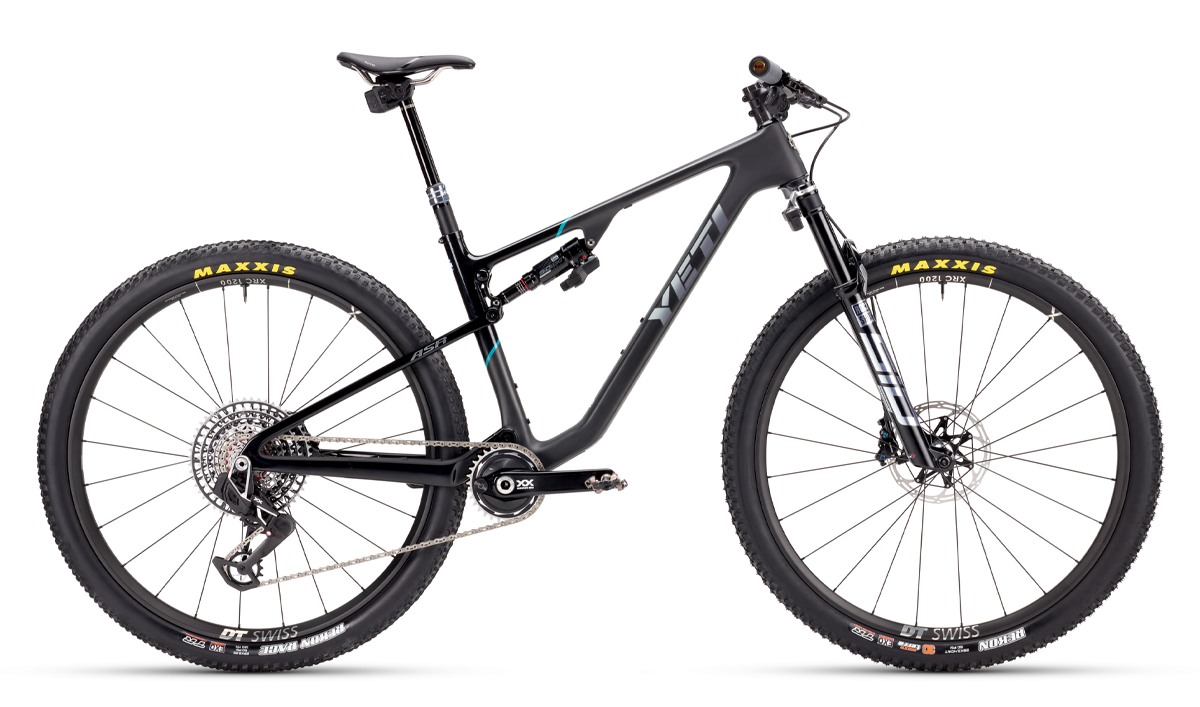
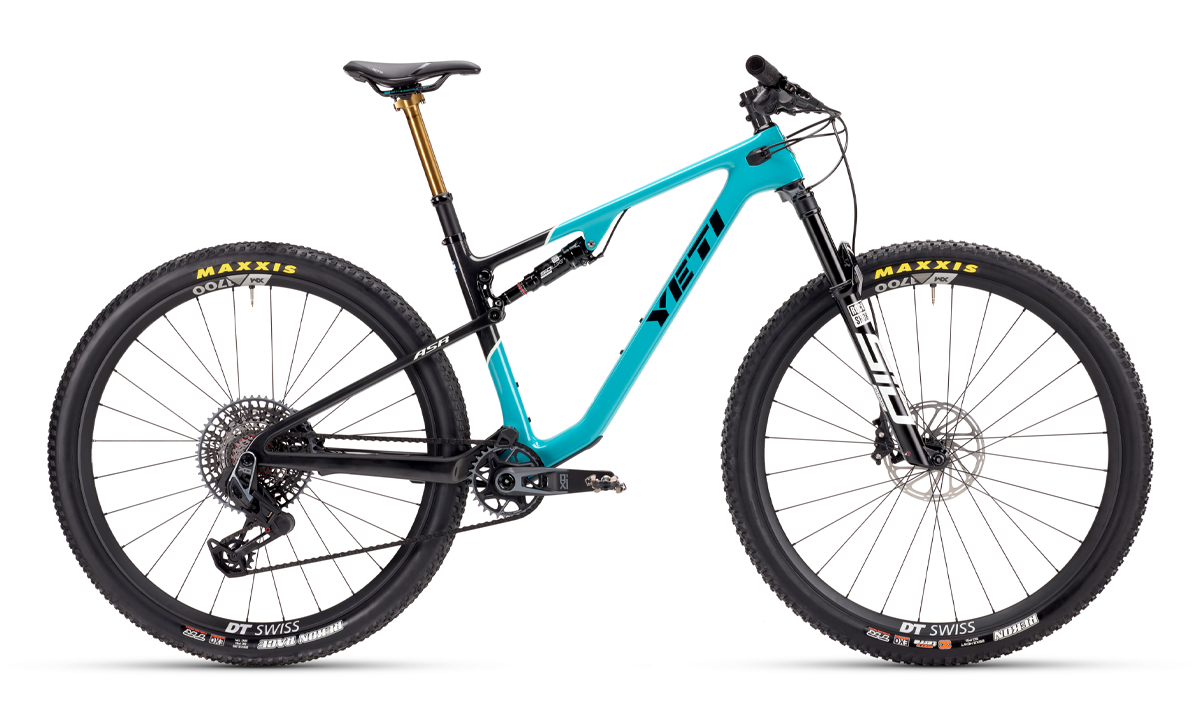

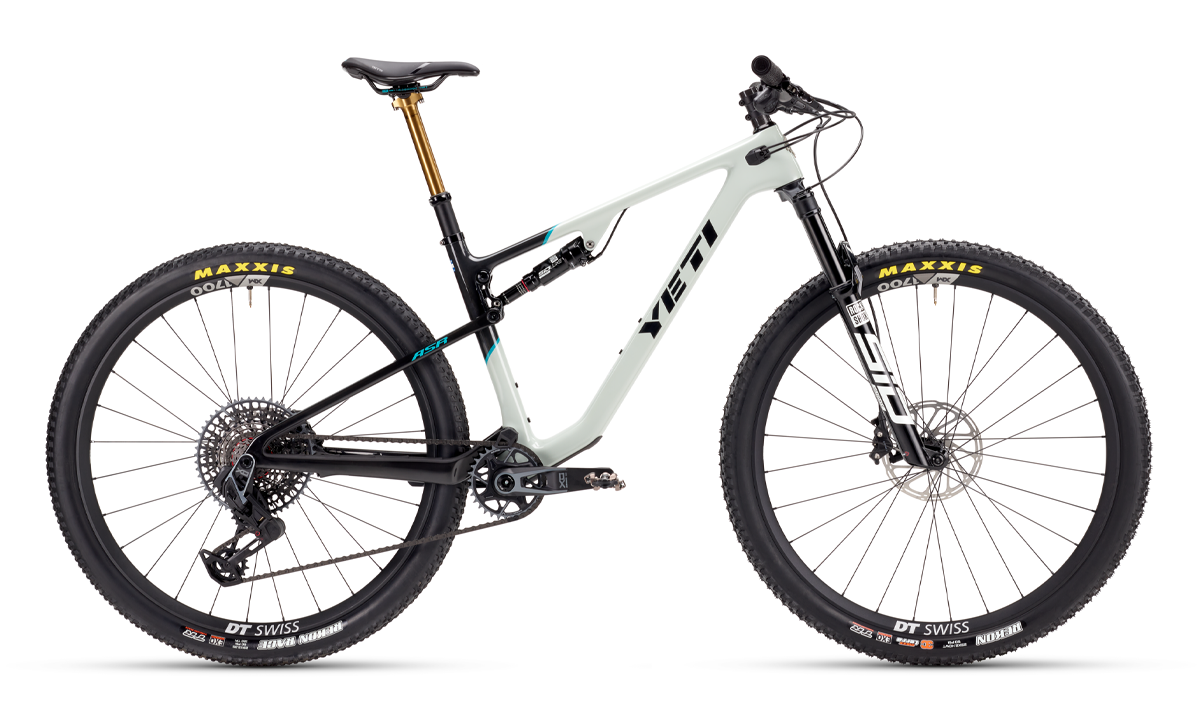












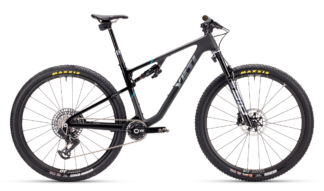


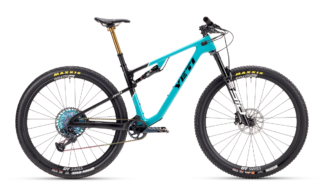
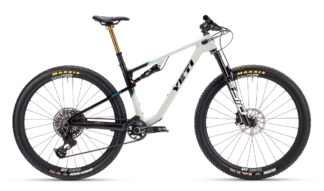
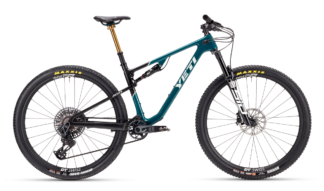
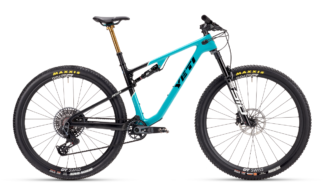
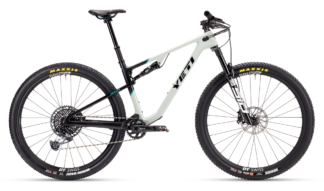
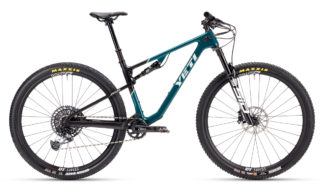
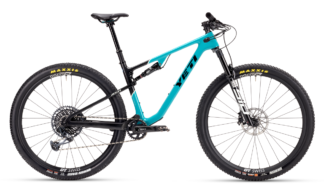
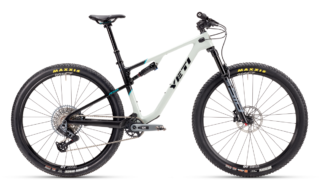
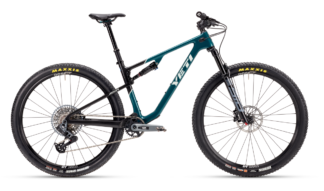
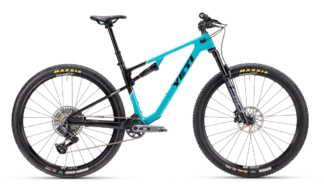
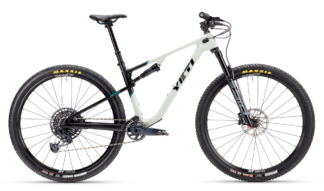
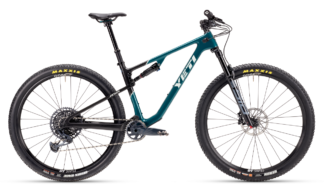





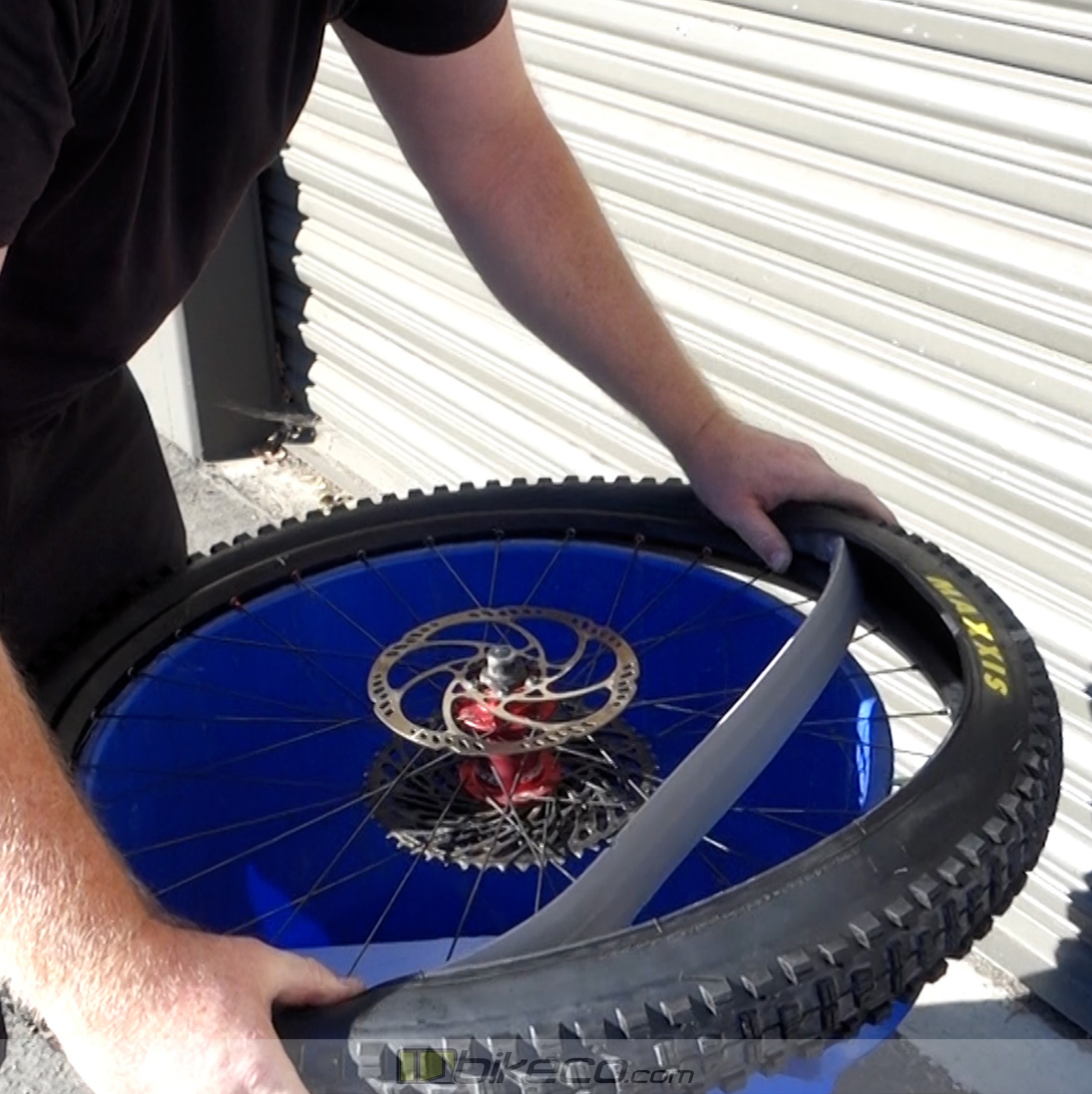

 Just a little low on the PSI for my taste. The X markings have me increase pressure about 2 PSI.
Just a little low on the PSI for my taste. The X markings have me increase pressure about 2 PSI.